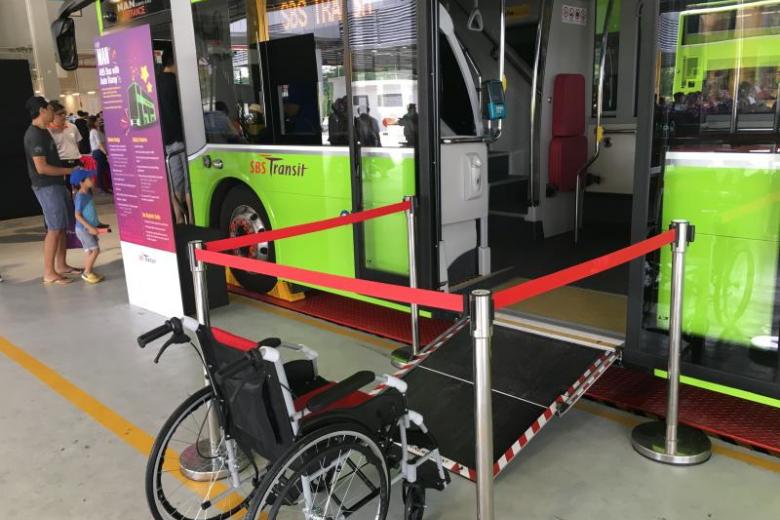SINGAPORE - The Land Transport Authority (LTA) is testing out an automated wheelchair ramp for buses, to make it easier forelderly and disabled commuters to board and alight.
The automatic ramp, which can be deployed by bus captains using an activation button near the exit door, has been installed on a double-deck MAN A95 bus operated by SBS Transit, The Straits Times has learnt.
The bus with the new ramp is currently deployed on service 76, which plies the Yio Chu Kang, Ang Mo Kio and Upper Paya Lebar areas.
A six-month pilot, which ends in March, is now on to see if the system is feasible.
"LTA will evaluate the results of this trial - including the operational and safety features of the automated ramps - before deciding if this should be deployed to more buses," a spokesman told ST.
Currently, wheelchair-accessible buses in Singapore have ramps which have to be manually deployed by bus captains. The ramp forms a bridge between the bus floor and the kerb at the bus stop.
Since 2006, public buses have been fitted with manual ramps to make them wheelchair-friendly.
As of September 2017, about 95 per cent of the bus fleet are new buses fitted with ramps, and the LTA intends to have all buses wheelchair-accessible by 2020.
Industry players said that costs could be a consideration in adopting automated bus ramps, which are used in cities such as London. They estimate that these ramps cost about two to three times more than manual ones.
One supplier of such systems, who declined to be named, also said: "Automated ramps come with a trade off, such as motors short-circuiting or mechanical parts getting rusty, during heavy rains or floods."
Housewife Jaswinder Kaur, 42, whose 85-year-old mother is a wheelchair user, said an automated system will make things easier for the bus captain.
Other commuters, however, felt that the activation button should be placed at the driver's cabin, rather than at the rear doors, so he would not need to get out of his seat to deploy the ramp.



